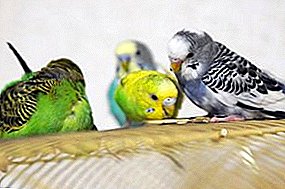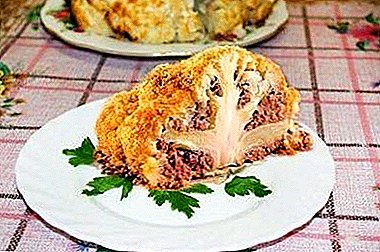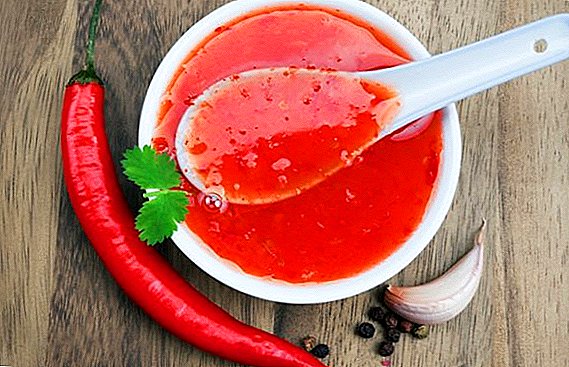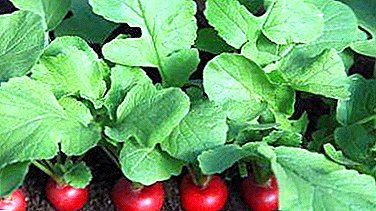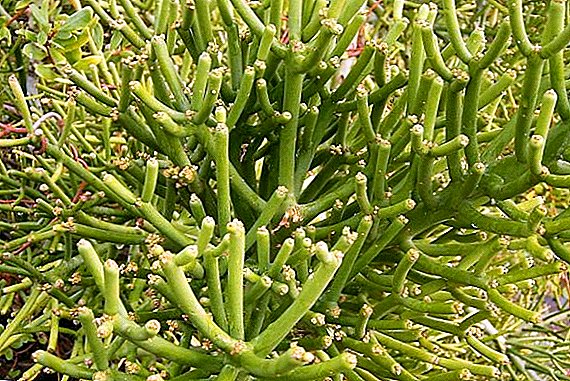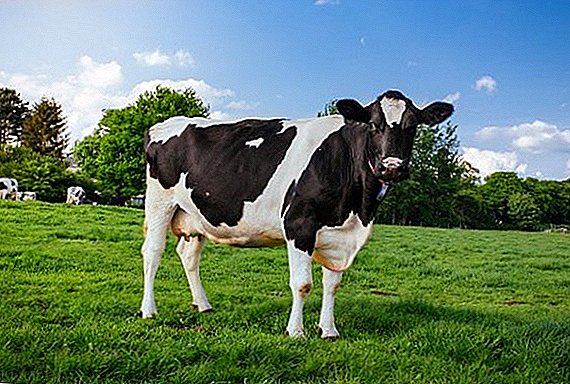 It is important for any farmer to know the age characteristics of their wards: what is the total duration of their life, at what age they reach slaughter sizes, become sexually mature, lose productivity, etc. In addition, it is impossible for a breeder to do his job without the ability to determine the age of an individual. it depends on its cost and conditions of detention. Let's try to comprehend all these wisdom regarding the cow, rightly considered one of the most profitable pets from an economic point of view.
It is important for any farmer to know the age characteristics of their wards: what is the total duration of their life, at what age they reach slaughter sizes, become sexually mature, lose productivity, etc. In addition, it is impossible for a breeder to do his job without the ability to determine the age of an individual. it depends on its cost and conditions of detention. Let's try to comprehend all these wisdom regarding the cow, rightly considered one of the most profitable pets from an economic point of view.
What determines the life of the cow
Before we talk about absolute numbers, find out what factors affect the life of this animal. It would seem that everything depends on the conditions of detention, but in fact it is not quite so.
Did you know? The cow was domesticated not less than 5 thousand years ago, while initially the size of the animal was such that they could be milked by a man standing rather than sitting. In poor peasant families in Russia of the Peter the Great, cattle shrank from the difficult living conditions to the extent that it corresponded to a modern European calf in size, so the main purpose of its maintenance was to obtain organic fertilizer - manure.
The life expectancy of a cow is determined by:
- Climatic conditions. A comfortable temperature for Bos taurus taurus (Latin name for a domestic cow) is +10 ° C. The farther the temperature indicators from this mark in one direction or another, the sooner the animal will exhaust its natural reserve. Burenok not too well tolerate high humidity and strong winds. For example, in the North-Western regions of Russia, where the weather conditions are harsh, and the vegetation is poor, cattle on average do not live as long as in favorable black-earth regions.
- Country (region) of residence. The matter in this case is not so much about its territorial location, as about the level of development, mentality, method of keeping animals, intensity of exploitation. If a cow is treated as a sacred animal (modern India, Sri Lanka, Nepal and other states where Hinduism is the dominant religion), the animal is much more likely to live to old age than where it is exploited and sent for slaughter as soon as productivity starts to fall.
- Ecology. The maximum remoteness from megacities, industrial facilities and other civilization achievements significantly increases the lifespan of an animal, therefore in a remote village the farmer has much more chances to develop beef and milk production than in the city.

- Breed. Breeders bred special types of cows (for example, the Holstein-Friesian breed), designed for long-term milk productivity in almost any conditions. For meat breeds, where bulls are raised for slaughter for a year or a little longer, it is not the total lifespan that is more important, but the rate of weight gain.
- Floor. Like humans, cows have the weaker sex on average live significantly longer than males.
- Diet Unlike other farm animals, proper nutrition for cows is much more important than all other housing conditions. If animals are exclusively fed with concentrate, they will exhaust their life resources much earlier than the time allowed by nature. On the other hand, competent use of modern combined feeds allows increasing the average lifespan of horned herds in comparison with animals that are kept in private farms, in the summer independently obtaining food for themselves on free grazing, and in the winter eating only hay and straw.
Familiarize yourself with the feeding characteristics of calves, sires, milk and dry cows.
- Quality care. The cleanliness in the room where the herd contains, the regularity of cleaning in it and cleaning the feeders, the presence or absence of drafts, the canopy during the heat and heating in frost largely depends on health and, consequently, the life expectancy of both bulls and little girls.
- Individual characteristics. It is impossible to deny that the life expectancy of any living creature is largely determined by genetics, hereditary predisposition to certain diseases.
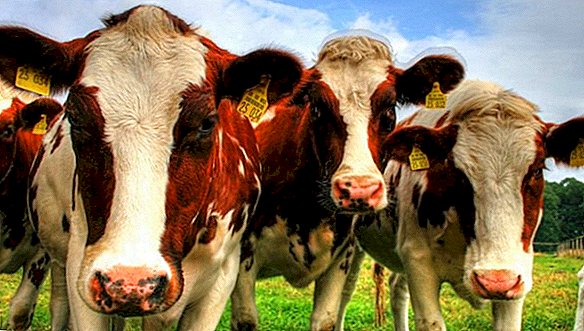
Thus, both objective and subjective factors influence the life cycle of animals.
How much does a cow live?
From the above, it becomes clear that talking about the average life of a cow can be very conditional, generalized: the life of the heifer lasts 25-30 years, the bull - no more than 15 years.
Find out what affects life expectancy and how many rabbits, chickens, geese, swans, ducks, quails and pigeons live on average.
It should also be understood that the farmer is usually not so much interested in the physiologically possible age of his herd, as in the period of time during which his members can be exploited - to give milk and produce offspring. This term is designated by the concept of "productive age". For a cow, it is about 12-15 years old.
The above information will not be complete if you do not specify the normal age indicators of the average life expectancy of cows, depending on the country of residence.  So, the average life expectancy of Bos taurus taurus is:
So, the average life expectancy of Bos taurus taurus is:
- in Israel and India - 35-40 years;
- in the USA - 25-30 years;
- in most European countries - 20 years;
- in Russia - 6-7 years.
Did you know? One of the famous records of longevity in cows is 47 years old. A representative of the Dremonskoy breed named Big Burt lived to such a respectable age. It is interesting that during its long life this cow from Ireland produced 39 calves, which is an absolute record among all cattle species.
It should also be understood that the actual life expectancy directly depends on the direction of use (milk or meat) and on whether the animal is kept in a private household as the wet-nurse of the whole family or on a large farm, where it is only a source of profit.
At home
In households, the average life expectancy of a cow is 15-17 years (according to other data - 10-12 years), that is, it corresponds to the length of the productive age of the animal.  After the animal's milk yield decreases, and the cow can no longer produce offspring, it is sent to meat. It should be noted that during its not too long life the domestic cow manages to bring up to 12 calves, that is, calving takes place more often than once every six months.
After the animal's milk yield decreases, and the cow can no longer produce offspring, it is sent to meat. It should be noted that during its not too long life the domestic cow manages to bring up to 12 calves, that is, calving takes place more often than once every six months.
Considering that cows have a pregnancy of 283 days, domestic cows are in this state 60% of their lives.
On large farms
On large farms, the operation of cattle is carried out even harder. Here dairy cows are sent to meat by the end of the 7th year of life. As for meat breeds, their life expectancy is even less.
Important! The slaughter age of meat bulls is 15-18 months, when the calf is gaining half a ton of weight. Sometimes animals can live to 2 years, but after this age their weight gain decreases dramatically, and therefore it becomes economically unprofitable to continue feeding.
In other words, the cows almost never manage to live to a natural age in the household or on the farm, and consequently, the biological life expectancy of this animal is radically different from the actual one. 
Phases of the life of a cow
The life cycle of a cow, like any living organism, is divided into certain phases: childhood, maturity, old age. Farmers in this sense, of course, are primarily interested in productive indicators - the period when the animal gives milk, as well as the reproductive age of bulls and calves.
At what age can cover heifers (cow)
Puberty in both sexes Bos taurus taurus occurs approximately simultaneously - in 6-9 months. By 14 months, the baby is already fully ripe ("comes into the hunt").
Important! The optimal age for the first mating is: for a little chick - 18 months, for a bull-calf - 14 months.However, experienced farmers categorically do not recommend covering it at this age: early pregnancy in animals is fraught with complications, in addition, a nervous and inexperienced individual may inadequately respond to overly persistent courtship and injure themselves or the bearer.
Video: at what age to insect (cover) chicks Even the correct age of animals makes the first coating a very nervous process. It is desirable that in pairs at least one individual already had sexual experience, otherwise a bullhead, confused by the intractability of the heifer, may refuse to realize the original intentions instead of showing patience and perseverance.
At what age does milk begin to give
The dairy period of a cow begins at the final stage of pregnancy - at the age of 2 years and 4 months: the age of one and a half years at the moment of conception plus 9.5 months of pregnancy (pregnancy). In theory, cow's milk is intended for feeding a calf. The lactation period in natural conditions lasts 6-7 months after calving.
The first five days of lactation milk contains a low amount of fat, but it is very rich in antibodies necessary to protect the weak immunity of the baby. This product is called colostrum and should not be used by humans.
Read more about how to milk a cow.
Next comes the so-called "section", that is, the establishment of a normal mode of lactation: it lasts from 10 to 50 days after calving. Then follows the period of maximum milk yield, after which the cow needs rest to gain strength until the next pregnancy (deadwood).  However, in terms of industrial production (and even in households), this frequency is almost never observed. Cows are milked much longer than the period set by nature, and if it were not for the natural decrease in the amount of milk, this process would not cease at all.
However, in terms of industrial production (and even in households), this frequency is almost never observed. Cows are milked much longer than the period set by nature, and if it were not for the natural decrease in the amount of milk, this process would not cease at all.
This extension of lactation is provided by active stimulation of the nipples, perceived by the body of the female cow as the continuing need of a calf in milk. However, in any case, the maximum milk yield is usually observed from 2 to 4 months after calving, so the cow is soon covered again after that.
The best breeds of dairy cows include such breeds as Yaroslavl, Kholmogory, red steppe, Dutch, Ayrshire and Holstein.
Even after pregnancy, the animal continues to be milked, allowing it to rest only a couple of months before the intended birth, so that the lactation process can then start with the same force.
At what age stops giving milk
Modern technologies make it possible to increase yields up to ten times compared to natural ones, however, the animal’s body wears out very quickly, since it is not designed for such operation at all. As a result, starting from 7 years of life, the amount of milk that can be obtained from a cow begins to decrease gradually, and by 12–15 years, milk yield is practically reduced to zero.  In general, the milk production of a cow during its life looks like this:
In general, the milk production of a cow during its life looks like this:
- first calving - 76% of the maximum milk yield (if this figure is below 30%, the heifer is sent for meat);
- second calving - 85-89%;
- third calving - 93-97%;
- fourth-sixth calving - 100%;
- seventh calving - 90%;
- eighth calving - 80%.
Important! On large dairy farms, cows are used for 8-10 periods of lactation, then sent for slaughter.
How to determine the age of the cow
Considering that the productive period of the life of a female cow lasts under similar operating conditions not so long when buying an animal, it is very important to know its true age.
You can, of course, trust the words of the seller and see the documents that he will show, but it is better to know some tricks to check this information. Horns and teeth of an animal are used as an excellent hint. 
On the horns
The age of a cow can be determined according to the horns in the same way as the age of a tree: each calving is noted on the horny outgrowths of an animal as a separate horny ring (although sometimes they are barely distinguishable, the clarity of this sign depends largely on the quality of the animal's nutrition).
Thus, considering the horn rings, we find out how many times the female became the mother, and not how many years she lived in the world, however, taking into account that without calves there is no milk, and the constant milk yield is exactly what people keep in the farm of cows, the number of children allows you to set the age of the animal with great accuracy.
Important! The cows acquires the first ring on the horns by the age of 2.5-3. Accordingly, each following ring adds 1–1.5 years to this age.
The horns can also determine the age of the calf. The eruption of small horns in babies occurs by two months, after which the horns increase at a rate of about 1 cm per month. Of course, this method may not seem too accurate and reliable, but everything will become much clearer if you combine it with a careful study of the teeth of the animal and compare the results.
Video: How to determine the age of a cow horns
In the teeth
In cows, as in many other animals, there is a single change of teeth: first, milk grows, then they are replaced by indigenous ones. Further, with age, the molars begin to fade, and this process takes place gradually and in a certain sequence.
Therefore, looking into the animal's mouth, one should look for answers to the following questions:
- whether the change of milk teeth to the root ones occurred and if this process is not completed, which teeth have already been replaced and which ones have not;
- what is the state of molars.
Important! The cow's milk teeth are much thinner and narrower than the molar ones, so once seeing the inside of the jaw of the calf and the adult bull, it will be impossible to make a mistake.
The change of teeth in calves occurs in a clear order by which it is easy to determine the age of the animal:
| Type of teeth | Age of change to indigenous |
| Cutters | 14-19 months |
| Medium internal teeth | 18-26 months |
| Middle outer teeth | 2 years or a little later |
| Okrayki | 2.5-3.5 years |
Thus, if a calf does not have milk teeth in its mouth, its age is at least 2.5 years. Further, up to about 4-5 years, the condition of the teeth in a cow remains close to ideal, and then gradually begins to deteriorate.  If okrayka stechled to a smooth and round state, or completely absent, the animal, most likely, managed to celebrate its tenth anniversary.
If okrayka stechled to a smooth and round state, or completely absent, the animal, most likely, managed to celebrate its tenth anniversary.
Did you know? Usually cows are milked about 10 months after calving, managing to get more than 7.5 thousand liters of milk from each. This amount corresponds to almost 100 annual rates of consumption of milk and dairy products per person. In this case, there are cases when the milking period lasts up to 2 years without a break.
From this we can make an unambiguous conclusion: having a natural reserve of resources, calculated for 3-4 decades, cows rarely get the opportunity to use it even by a quarter.
The exception to this rule is perhaps that Israeli and Indian cows, the average life expectancy of which is even longer than their relatives living in the wild.





